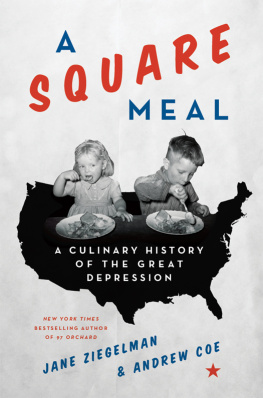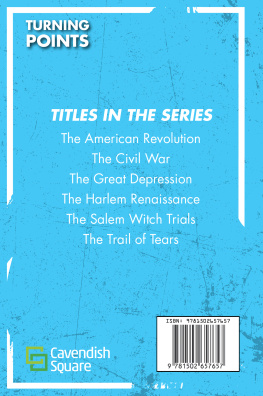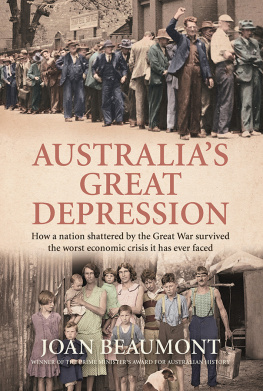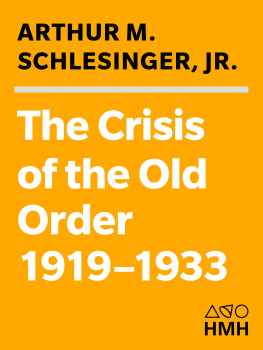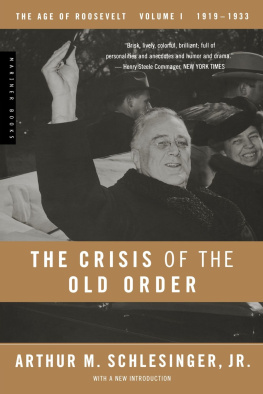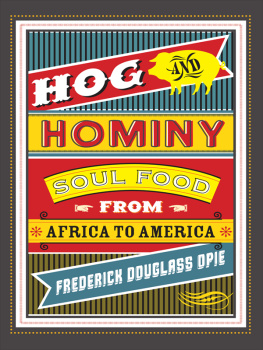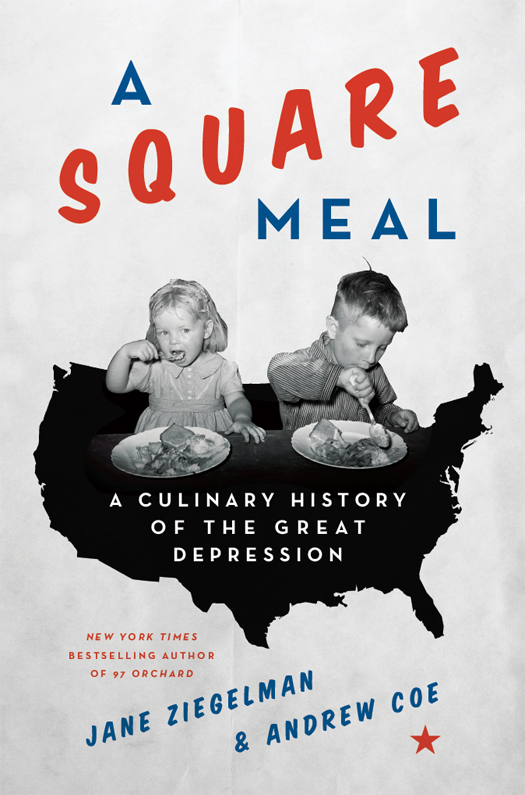To Buster and Edward
T HE RESEARCH AND writing of this book spanned a huge variety of topics, from public policy to hobo lore, and took us on a journey through historical documents to every corner of the United States. We could not have completed it without considerable help from numerous libraries, archives, and individuals. Home base for our research was the New York Public Librarys General Research Division, but we also relied on important collections in New York Universitys Bobst Library, particularly the Fales Librarys Marion Nestle Food Studies Collection, the Rare Book & Manuscript Library at Columbia Universitys Butler Library, and the Library of Congress. The Special Collections division of the Cornell University Library generously provided access to archives of the schools Department of Home Economics, including important correspondence with Eleanor Roosevelt. For research into the policy and politics of food and relief, we relied on the vast resources of the National Archives and Records Administration, including its College Park, Maryland, facility; Kansas City, Missouri, division (for the Bureau of Home Economics records); Herbert Hoover Presidential Library; and, most important, the Franklin D. Roosevelt Presidential Library in Hyde Park, New York. The friendly and exceedingly helpful staff of the National Agricultural Library helped us retrieve a trove of material related to the United States Department of Agriculture and its Bureau of Home Economics. Other libraries that gave us crucial research assistance were the Bentley Historical Library at the University of Michigan and the California State Library, whose Emily Blodget was a huge help. Among the many experts who gave us research guidance and material were Eleanor Arnold, Carole Eberly, and especially Anne Mendelson for her wise counsel and her America Eats! files. The Writers Studio at the New York Mercantile Library has been a welcome haven for writing and contemplating our next meal. We would like to thank our agent, Jason Yarn, who was always ready to leap into the breach when we needed a hand (and an extension), and, of course, our very patient editor, Bill Strachan, who stood by us during the too many years it took to complete this book. We endured the effort thanks in part to the friendship and support of the Weekend Flushing Eats Crew, who kept up our spirits with the help of copious amounts of good food.
Contents
Guide
E ARLY ON THE morning of November 11, 1918, on a railroad car in northern France, a German delegation signed the Armistice agreement, signaling the end of hostilities and the complete defeat of the German army, to go into effect at 11 a.m. that day. At 10:59 a.m., the last soldier was killed in World War I: an American infantryman from Baltimore named Henry Gunther, who ignored orders and senselessly charged a pair of German machine guns. When the hour was reached, the guns grew silent on the fields of battle that stretched across the western front. For the 1.2 million troops of the American Expeditionary Force, the Armistice ended the largest and bloodiest battle in American history, the Meuse-Argonne Offensive, in which 26,000 U.S. soldiers had been killed. The survivors were exhausted and often shell-shocked, suffering from trench foot, fleas, lice, scabies, dysentery, and a host of other ailments. They packed their mess kits, blankets, trench tools, gas masks, and other gear in their field packs, shouldered their rifles, and began their march to the railway lines, where they would begin their journeys home. Despite the privations they had undergone, the Americans held one great advantage over both the German enemy and the soldiers of their French and British allies. They were by far the best-fed troops of World War I.
The U.S. Army field ration in France varied according to circumstances, but the core of the soldiers daily diet was twenty ounces of fresh beef (or sixteen ounces of canned meat or twelve ounces of bacon), twenty ounces of potatoes, and eighteen ounces of bread, hard or soft. American troops were always proud that they enjoyed white bread, while all the other armies had to subsist on dark breads of various sorts. This ration was supplemented with coffee, sugar, salt, pepper, dried fruit, and jam. If supply lines were running, a soldier could eat almost four pounds of food, or 5,000 calories, a day. American generals believed that this was the best diet for building bone, muscle, tissue, and endurance. British and French troops consumed closer to 4,000 calories, while in the last months of the war the Germans were barely receiving enough rations to sustain themselves. Compared to noncombatants, they were relatively lucky. Across the war zones of Belgium, northern France, and eastern Europe, many thousands of women, children, and old people had starved to death. Away from the front lines strict rationing was the rule, with barely any meat available to civilians. In the history of Europe this hunger was nothing new, just the latest in the series of famines that had swept across the continent over the centuries.
The U.S. Army owed its stupendous culinary fortune to the richness of the American soil, the hard work of its farmers, and a man named Herbert Hoover. Shortly after the United States entered the war in April 1917, President Wilson asked Hoover, a brilliant mining engineer who was then directing food relief to Belgium, to reorganize the American food system to support the war effort. Operating under the slogan of Food Will Win the War, the U.S. Food Administration sold farmers fertilizer at discount prices and encouraged them to expand their acreage and adopt the latest scientific farming practices. Hoover also fixed agricultural prices to avoid inflation and took control of railway lines to ensure rapid shipment of foodstuffs to East Coast ports, where ships were loaded with Maine potatoes, beef and pork from the Chicago stockyards, Dakota wheat, and dried fruits from Oregon and California. If the merchant fleets were able to avoid German U-boats, the food would arrive in Europe to be distributed to Allied troops, hungry refugees in Belgium and northern France, mess halls, field kitchens, and frontline trenches.
During the war, the troops unofficial motto had been Heaven, Hell, or Hoboken by Christmas. Most had embarked for Europe from the Hoboken docks; if they survived the conflict, they hoped to land again at Hoboken. In reality, the majority of them missed Christmas, at least in 1918, and the ships carrying them home also landed at Boston, Newport News, and Charleston. For the returning, often seasick troops, their first view of American soil somehow seemed to take place early in the morning, in the fog. Nevertheless, their greeting back in American waterseven before they landedwas rapturous. Local governments, newspapers, and anybody else who could chartered boats to race out to meet the arriving ships. When the Mauretania, carrying 3,999 troops, steamed into New York Harbor late in 1918, a police boat carrying the mayors welcoming committee pulled alongside. After city dignitaries shouted greetings to them through megaphones, the troops who crowded the deck and hung from every porthole bellowed en masse: When do we eat?! It became a custom for greeting parties to hire professional baseball pitchers to hurl California oranges at the troopssome soldiers sustained concussions from the barrageto give them their first taste of fresh American produce in more than a year, a prelude to the series of memorable feasts that would mark the rest of their journeys home.
After the boats tied up, teams of young women from local Red Cross canteens rushed on board with coffee, sandwiches, and doughnuts to distribute to the soldiers. The next order of business was a homecoming parade, more than five hundred of which were held in cities across the country. The biggest parades were staged in New York City, where Fifth Avenue from the Washington Square Arch north was festooned with lanterns and American flags. At almost every parade, crowds threw gifts of fruit and candy to the passing troops. In Boston,

